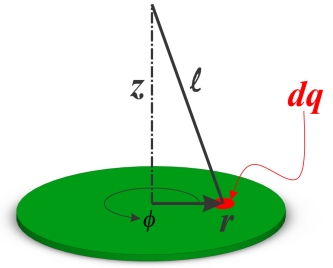

This follows from Jordan-Shoenflies theorem. There are at most two faces incident on an edge.The topology on the graph is that of a CW-complex.
#PLANAR DISK GRAPH PROOF FREE#
Free trees are somewhat like normal trees. In the following theorem we give a simple inductive proof for a more general claim that shows the existence of such a path in any disk (not only the diametral disk) between pand q. In graph theory, a free tree is any connected graph with no cycles. Their proof makes use of Voronoi cells (of the Voronoi diagram of P) that intersect the line segment pq. We’ll prove that this formula works.1 18.3 Trees Before we try to prove Euler’s formula, let’s look at one special type of planar graph: free trees. Proof by induction, we induct on n, the number of vertices in a planar graph G. For the second question, we prove the existence of an EPTAS for homoth- ets of a fixed bounded and centrally symmetric convex set. Planar graph: A graph that can be embedded in $\mathbb$ in this embedding.] Footnotes: Finally, for connected planar graphs, we have Euler’s formula: ve+f 2. Theorem: Every planar graph with n vertices can be colored using at most 5 colors.There are 3cases:Case(a): eis a loop added on somev2V. (2) Inductive step: suppose forGwith (G) k, (G) (G) + (G) 2: LetHbe a planar graph such that G is a subgraph and (H) k+ 1. proved that every 4-connected projective-planar graph is hamiltonian. Basic step: when 0, sinceGis connected, Gmust be trivial. In complexity theory, we often distinguish between feasible problems (i.e.Feel free to contribute filling up the arguments that are incomplete.īefore proving anything we need to make it precise what is it what we are trying to prove. In this paper, we prove that there exists a function a : N0 × R+ N. where equality holds if every face is homeomorphic to an open disk (in. The complexity of graph isomorphism remains a significant open problem. For a planar graph having v vertices and e edges, the following holds: If v 3 then e 3 v 6 If v 3 and there are no cycles of length 3, then e 2 v 4. description and proof of the algorithm for planar graphs, and section 4 describes. But we don't yet have easily checked isomorphism invariants that are sufficient. A disk graphGis aunit diskgraph if there exists disk intersection model forGwhere all disks have equal radius (without lossof generality, all their radii are equal to 1). circles together with theirinternal area) in the plane. We can often show that two graphs are non-isomorphic by noticing a structural difference between them, and then showing that that difference is an isomorphism invariant. is the intersection graph of a set of disks (i.e.

It always exists, since else, the number of edges in the graph would exceed the upper bound. a disk B(n) of center (0,0), and radius n, we take k k(n) such that the. For all planar graphs with n(G) 5, the statement is correct. If H s G is a minimal non-p-planar graph with e(H) k + 1, we can. By induction on the number n(G) of vertices. You won't be surprised to know that while the number of triangles in a graph is an isomorphism invariant, it is not a sufficient condition for the existence of an isomorphism. Theorem 3 Every planar graph G is 5-colorable. Some brief reflections on graph isomorphism Once we've verified that $F$ is bipartite, we know by Theorem 26.7 that $F$ contains no cycles of odd length, and in particular, no triangles. \newcommand \choose 3$ simple facts about $G$. We give a short proof of a theorem of Lipton and Tarjan, that for every planar graph with n > 0 vertices, there is a partition (A, B, C) of its vertex set.


 0 kommentar(er)
0 kommentar(er)
